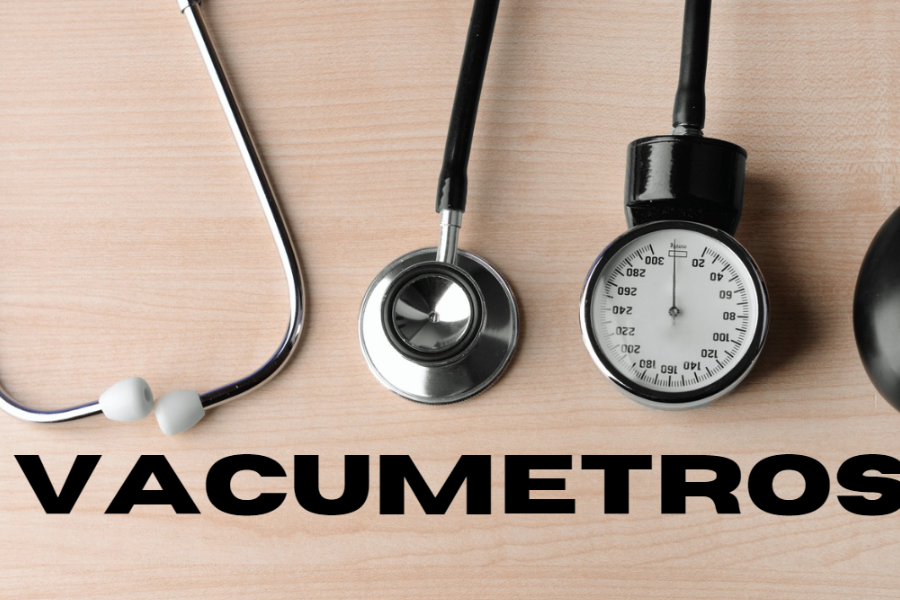“Ensuring Precision: The Science and Functionality of Modern Vacuometers”
Introduction to Vacuometers: Defining the Tool and Its Importance
A vacuometer, sometimes referred to as a vacuum gauge, is a crucial instrument for measuring pressure levels that fall below atmospheric pressure. This tool typically features a dial with a needle that moves within a specific range to indicate the degree of vacuum or negative pressure in a system. The measurements are usually displayed in units like inches of mercury (inHg) or millimeters of mercury (mmHg).
Understanding and measuring vacuum is vital for maintaining the efficiency and performance of various systems. Whether in engines, HVAC systems, or even household appliances, accurate vacuum measurement is essential for diagnosing issues and ensuring optimal operation. Without a vacuometer, diagnosing and fixing problems would be less precise, potentially leading to inefficiencies and incorrect repairs.
The Science Behind Vacuometers: Understanding How They Work
At the core of many traditional vacuum gauges is a component known as a ‘Bourdon tube.’ This mechanical element plays a central role in translating vacuum levels into readable measurements. When the vacuum level changes, the pressure difference between the inside of the Bourdon tube and the external vacuum source causes the tube to either expand or contract. This movement is then transferred to the gauge’s needle, which displays the vacuum level on the dial.
In digital and electronic vacuometers, the underlying principles are similar but involve electronic components. Here, pressure changes are converted into electrical signals that are processed and displayed by the device. The accuracy of these measurements depends on the sensitivity of the pressure-sensing elements and their ability to detect even slight variations in pressure.
Overall, vacuometers are indispensable tools in a range of applications, providing precise measurements that are essential for diagnosing and maintaining various systems.
Introduction
Vacuometers, also known as vacuum gauges, are vital tools used to measure pressure levels in a vacuum. These instruments are indispensable in fields like automotive repair, manufacturing, and scientific research. They help ensure accurate pressure readings, which are crucial for maintaining the efficiency and safety of various systems. But what exactly are vacuometers, and why are they so significant? Let’s take a closer look at vacuometers, their history, different types, and their diverse applications.
History of Vacuometers
Origins and Development
The quest to measure vacuum pressure began centuries ago. One of the pioneers in this field was Evangelista Torricelli, a 17th-century scientist whose experiments laid the groundwork for vacuum measurement. Early vacuometers were quite basic compared to today’s standards, but they marked the beginning of a crucial scientific and industrial advancement.
Evolution Over the Years
As technology progressed, so did the design and functionality of vacuometers. The initial mercury-based gauges, though revolutionary at the time, eventually gave way to more advanced technologies. Over the years, vacuometers have evolved from these early models into sophisticated digital devices. Today’s vacuometers are not only more accurate and reliable but also more versatile, capable of meeting the complex demands of various industries.
From their humble beginnings to their current state, vacuometers have come a long way, reflecting the broader advancements in technology and science.
Vacuometers in Environmental Monitoring
Role in Air Quality Measurement
Vacuometers play a key role in environmental monitoring by measuring the pressure of gases in the atmosphere. These instruments are vital for assessing air quality, detecting pollution levels, and ensuring that environmental safety standards are met. By providing accurate pressure readings, vacuometers help track and manage the presence of pollutants, contributing to a cleaner and healthier environment.
Importance in Pollution Control
In pollution control systems, such as scrubbers and filters, vacuometers are essential for maintaining operational efficiency. Accurate pressure readings ensure that these systems are working correctly, helping to reduce emissions and improve air quality. Without reliable measurements from vacuometers, it would be challenging to monitor and control pollution effectively.
Safety Considerations
Proper Handling and Usage
To ensure the longevity and accuracy of vacuometers, proper handling and usage are crucial. Always follow the manufacturer’s guidelines to avoid damaging the instrument and to maintain its performance. Proper care helps extend the life of the vacuometer and ensures accurate readings.
Safety Protocols to Follow
- Wear Protective Gear: When handling vacuometers, especially in hazardous environments, it’s important to wear appropriate protective gear such as gloves and goggles. This helps protect against potential exposure to harmful substances and accidents.
- Regular Inspections: Conducting regular safety inspections of vacuometers helps identify and address potential issues before they become serious problems. This proactive approach ensures the instrument remains in good working condition and minimizes risks.
Vacuometers Market Overview
Current Market Trends
The vacuometer market is experiencing growth, driven by increasing demand across various industries and ongoing technological advancements. The need for precise pressure measurements in diverse applications is fueling this expansion, leading to innovations and improvements in vacuometer technology.
Leading Manufacturers
Several companies are prominent in the vacuometer market, known for their high-quality and reliable products. Leading manufacturers include Bosch, Dwyer Instruments, and Omega Engineering. These companies are recognized for their commitment to producing accurate and durable vacuometers that meet industry standards.
Conclusion
Vacuometers are crucial tools across many fields, providing essential pressure measurements that support a range of applications. From monitoring air quality to controlling pollution and ensuring the efficiency of industrial systems, their versatility and reliability make them indispensable. When selecting a vacuometer, consider your specific needs and the features that will best serve those needs. With proper installation, maintenance, and adherence to safety protocols, vacuometers can deliver accurate readings and dependable performance for years to come.
Interpreting the Results
Once you have taken a reading with your vacuometer, it’s essential to interpret the results accurately. Use the vacuum level to diagnose potential issues or confirm that your system is operating correctly. If the reading deviates from what you expect, further investigation may be required to pinpoint and address the underlying cause. Accurate interpretation helps ensure that your systems remain efficient and perform optimally.
Common Mistakes to Avoid When Using Vacuometers
To ensure you get accurate readings and maintain safe operation, avoid these common errors:
- Over-Pressurizing the Gauge: Avoid exceeding the maximum pressure rating of your vacuometer. Doing so can damage the bourdon tube or cause leaks. Start with a low pressure and gradually increase it while keeping an eye on the gauge to avoid over-pressurization.
- Using the Wrong Gauge: Make sure to select a vacuometer that is suitable for the type of pressure measurement you need—whether it’s absolute, differential, or relative pressure. Using the wrong gauge can lead to inaccurate readings and potential system issues.
- Incorrect Attachment: Properly attach the gauge to your system to prevent leaks and ensure accurate measurements. Always use the correct fittings and double-check that all connections are tight and secure.
The Future of Vacuometers: Innovations and Trends
The field of vacuometers is evolving with advancements in sensor technology and digital interfaces. Here’s a look at some exciting innovations on the horizon:
- Integration with AI and Machine Learning: Future vacuometers may use artificial intelligence and machine learning to predict maintenance needs, improving reliability and reducing downtime.
- Compact Wireless Gauges: The development of wireless vacuometers enables remote monitoring, making it easier to track pressure levels without being physically present at the site.
- Improved Sensitivity: Advances in technology are enhancing the sensitivity of vacuometers, allowing for even more precise pressure measurements.
- Environmentally Friendly Designs: As sustainability becomes a priority, new vacuometers are being designed to be compatible with green technologies and refrigerants, aligning with eco-friendly practices.
Conclusion: Recap and Call to Action
In summary, vacuometers are vital tools that offer precise insights into system performance and are crucial for diagnostics and maintenance. Understanding how to use them correctly and avoiding common mistakes ensures both accurate readings and safe operation.
Whether you’re fine-tuning an engine, working on complex HVAC systems, or performing routine maintenance on household appliances, selecting the right vacuometer can make all the difference. Stay informed about the latest advancements and innovations in vacuometer technology to keep your work ahead of the curve. Embrace the tools and knowledge that will help you achieve excellent results and ensure your systems operate at their best.
Facts
- Purpose: Vacuometers, or vacuum gauges, measure pressure levels below atmospheric pressure, providing crucial data for various systems.
- Units of Measurement: They typically display measurements in inches of mercury (inHg) or millimeters of mercury (mmHg).
- Core Component: Many traditional vacuometers use a Bourdon tube, which translates vacuum changes into needle movement on a dial.
- Digital Advancements: Modern digital vacuometers convert pressure changes into electrical signals, offering precise and readable measurements.
- Applications: Vacuometers are used in automotive repair, manufacturing, environmental monitoring, and scientific research.
- Historical Development: The concept dates back to the 17th century, with early instruments evolving from simple mercury-based gauges to sophisticated digital devices.
- Environmental Monitoring: They are crucial for assessing air quality and maintaining the efficiency of pollution control systems.
- Safety Considerations: Proper handling, wearing protective gear, and regular inspections are vital to ensure accurate readings and safe operation.
- Market Trends: The vacuometer market is growing due to increasing industrial demand and technological advancements.
- Leading Manufacturers: Notable companies include Bosch, Dwyer Instruments, and Omega Engineering.
Summary
Vacuometers, essential tools for measuring vacuum pressure, have evolved significantly from their rudimentary origins to advanced digital devices. They play a critical role in various fields, including automotive repair, manufacturing, and environmental monitoring. By providing accurate pressure readings, vacuometers help diagnose issues, ensure efficient operation, and support pollution control efforts. Safety protocols and proper handling are crucial for maintaining the accuracy and longevity of these instruments. The market for vacuometers is expanding with technological advancements, including AI integration, wireless capabilities, and improved sensitivity. Staying informed about these developments ensures optimal use and performance of vacuometers.
FAQs
1. What is a vacuometer?
A vacuometer, or vacuum gauge, measures pressure levels below atmospheric pressure. It provides crucial data for diagnosing and maintaining various systems.
2. How does a vacuometer work?
Traditional vacuometers use a Bourdon tube to translate changes in vacuum pressure into needle movement on a dial. Digital vacuometers convert pressure changes into electrical signals for precise readings.
3. What are the key applications of vacuometers?
Vacuometers are used in automotive repair, manufacturing, environmental monitoring, and scientific research to measure and manage vacuum pressure.
4. Why is accurate vacuum measurement important?
Accurate vacuum measurement ensures system efficiency, effective diagnostics, and proper operation, helping to prevent inefficiencies and incorrect repairs.
5. What are common mistakes to avoid when using vacuometers?
Common mistakes include over-pressurizing the gauge, using the wrong type of gauge, and improper attachment to the system.
6. What safety precautions should be taken when using vacuometers?
Wear protective gear such as gloves and goggles, follow manufacturer guidelines, and conduct regular inspections to ensure safe and accurate operation.
7. What are the latest trends in vacuometer technology?
Recent innovations include AI and machine learning integration, compact wireless gauges for remote monitoring, improved sensitivity, and environmentally friendly designs.
8. How has the vacuometer market evolved?
The vacuometer market is expanding due to increased industrial demand and technological advancements, with leading manufacturers producing more accurate and versatile devices.
Stay informed about the latest advancements and trends in technology at https://sethbtaube.org/






